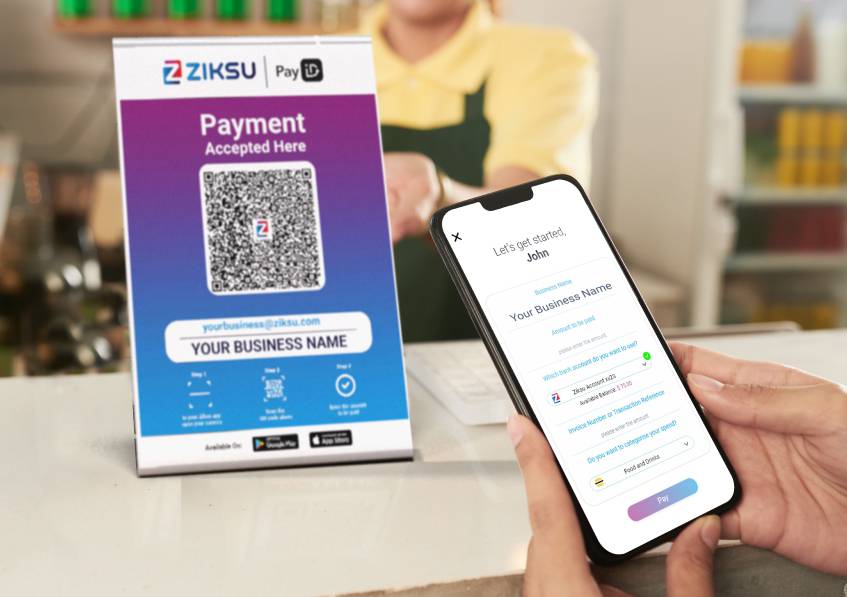QR Code Technology Marks Its Territory In Digital Finances

There is no denying that Quick Response (QR) codes have become an integral part of everyday life, particularly with escalating demands for Covid-19 contact-tracing protocols as the pandemic ravaged throughout the globe.
The technology was already popular in a number of countries in the Asia-Pacific (APAC) region with online payment and social media platforms like WeChat and AliPay in China. These platforms have led many other APAC nations to follow suit, and in the past ten years the technology has become a preferred method of payment.
In the past, Australian businesses used QR codes generally only for marketing purposes by redirecting users to landing pages, websites, social media profiles or store coupons. Although Australia has been slower to utilise the technology, the roll-out of QR codes for contact-tracing throughout the pandemic demonstrated the simplicity and efficiency of the technology.
QR Codes are now viewed in Australia as another genuine and reliable data storage system, which could be used for a range of applications, including digital finance platforms.
In the past, Australian businesses used QR codes generally only for marketing purposes by redirecting users to landing pages, websites, social media profiles or store coupons. Although Australia has been slower to utilise the technology, the roll-out of QR codes for contact-tracing throughout the pandemic demonstrated the simplicity and efficiency of the technology.
QR Codes are now viewed in Australia as another genuine and reliable data storage system, which could be used for a range of applications, including digital finance platforms.
Humble Beginnings for a Contactless Revolution
The QR code was invented by Denso Wave chief engineer, Masahiro Hara in 1994 to track vehicles and parts moving through an assembly line and remained under-the-radar, as a technology, until the advent of smartphones a few years later.
Although the technology gained substantial traction, users were still required to download a third-party app to scan the QR code. Fortunately, this all changed when Apple integrated a QR reader into its phones in 2017, prompting other phone manufacturers to quickly follow the trend.
Due to this renewed accessibility, the technology enjoyed a new wave of interest before being used extensively during the Covid19 pandemic in 2020. It gave businesses a new way to communicate with customers who were suddenly catapulted into a contactless society.
During 2020,11 million households in the US scanned a QR code, which was a significant jump from nine million in 2018. A number of industries used the technology for the first time, including hospitality, food, retail and manufacturing.
International Traction Takes Hold
Following in China’s footsteps, India and Singapore have led the way for QR code-based payment systems. A QR Code UPI, or a unified QR Code was introduced in 2014 in India, and a government led, demonetisation crusade in 2016 established a number of digital merchants, including PayTM, Google Pay and Bharat UPI.
India’s Reserve Bank announced BharatQR in 2017, the world’s first interoperable QR Code acceptance solution, developed in conjunction with Mastercard, Visa, and National Payments Corporation of India. This led to the birth of new-age payment merchants – PhonePe, Google Pay, and Amazon Pay, thus catapulting QR Code payment usage.
Payment companies Cielo, PagSeguro, and Mercado Pago offer QR Code payments at POS terminals in Brazil while iDEAL in the Netherlands allows merchants to generate QR Codes on customer receipts, print, and display in their stores, include them in invoices, and offer online payments.
How QR Codes Work
Financial establishments can use QR codes for faster and safer cashless payments.After scanning the QR code, clients would land on a secure payment page where they can use their mobile banking or mobile wallet app. Clients can pay their bills through this method without taking money out of their wallets or going to the bank.
Banks can create QR codes for bank transfers to provide ease and convenience to clients who want to send money to their family, friends, or business partners. The clients’ recipients can then receive the cash by scanning the QR code, while transactions are faster and more secure.







 Tags:
Tags: 
